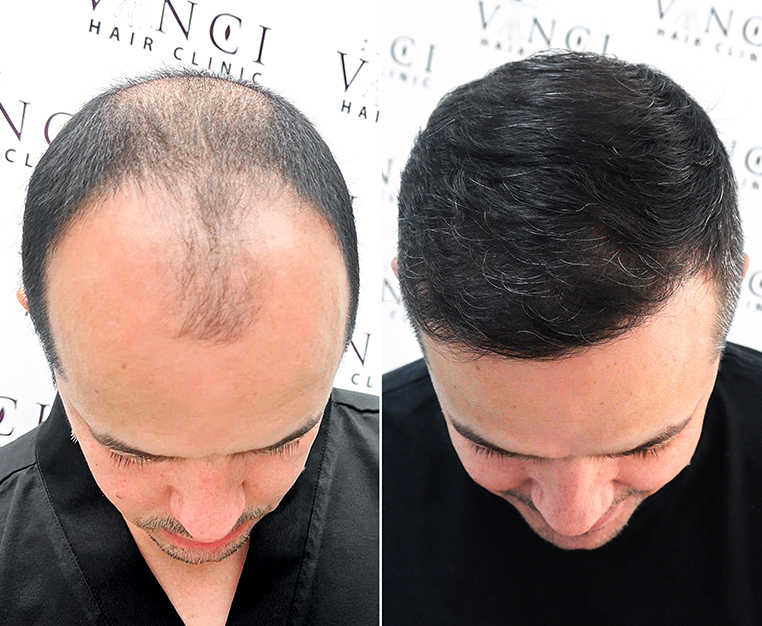If you’ve been scrolling through news websites recently, you may have come across some headlines about a potential cure for baldness that scientists have discovered in moles. To be clear, that would be the moles you find on your skin, not the furry kind that dig up your garden! Researchers at the University of California issued a statement in which they stated that their work could provide ‘a road map for an entirely new generation of molecular therapies for androgenetic alopecia.’ So, is this exciting news for hair loss sufferers or just a team of boffins trying to drum up funding for their work? Read on to find out more!
Molecular Mechanics
While there are some excellent hair loss treatments available today, ranging from medications to high-tech surgical procedures, the search for a revolutionary ‘fix’ for baldness continues. In recent years, much of this search has been conducted in the field of molecular mechanics.
Molecular mechanics is a branch of molecular biology that focuses on understanding and manipulating the mechanical properties of molecules and their interactions. It involves studying the structural and dynamic behaviour of molecules and using this knowledge to design novel therapeutic approaches.
In recent years, researchers have begun exploring the potential of molecular mechanics in hair growth and regeneration. In particular, research work has targeted the potential of small molecule compounds in hair loss treatment. These compounds can target specific molecular pathways involved in hair growth and regulation.
Hair Follicles
Hair follicles are of great interest to scientists working in this field. These tiny, specialised organs are responsible for hair growth. Understanding the intricate mechanisms involved in hair follicle development and function is crucial for developing effective treatments for hair loss.
Scientists hope that by applying molecular mechanics principles, they will be able to identify and synthesise small molecules that interact with hair follicle-related proteins. Delving deeper into the molecular processes governing hair growth in this way could enable them to develop viable methods of modulating hair growth and counteracting hair loss. This would be the seismic breakthrough in hair loss treatment strategies that has eluded researchers to date.
Osteopontin
This is why the work published by the University of California has sparked so much interest. The study focused on hair follicle stem cells using mice as models. Stem cells are at the heart of much research on regenerative medicine because of their ability to develop into lots of different types of cells.
The researchers identified specific molecular pathways and signalling molecules that play crucial roles in hair follicle development and regeneration. By manipulating these pathways using molecular techniques, scientists were able to stimulate hair growth in mice models.
The most significant signalling molecule identified by the research team is a protein molecule called osteopontin. Osteopontin is found in large quantities in the hair of young people. It is produced by senescent cells which stimulate hair growth on an industrial scale. It enables the growth of new, strong hair in moles.
This exciting development demonstrates the potential of molecular mechanics in targeting specific molecular components to promote hair regeneration.
Future
The scientists involved in the research believe that osteopontin could be injected into the scalp to reactivate dormant stem cells, thus stimulating hair growth in people experiencing loss or thinning.
While the results of the study are encouraging, it is still much too early to say if this represents a major breakthrough in hair loss treatment. Translating laboratory findings into practical treatments poses significant challenges. Factors such as the complexity of hair follicle biology, the intricate interplay of multiple molecular pathways and the need for safe and effective delivery methods need to be addressed.
Additionally, the development of hair loss treatments requires rigorous testing to ensure their safety and efficacy. Clinical trials of the new process are due to start in the next few months. However, while the prospect of more targeted and personalised therapies is tantalisingly close, it is still likely to be several years before any molecular mechanics-based treatments become widely available to the public.
Final Thoughts
By understanding molecular mechanics and the underlying hair follicle biology, scientists aim to develop innovative and effective therapies for hair loss. While challenges remain, the potential breakthroughs in this field offer hope for individuals struggling with hair loss and could pave the way for a new era of hair loss treatment.
If you’re struggling with hair loss now, you shouldn’t wait for the new era to arrive before getting treatment. Vinci Hair Clinic offers a free, no-obligation consultation to all new clients so that you can fix the problem sooner rather than later. Consultations are best done in person, but if you can’t get to one of our clinics, we can provide an assessment over the phone using photographs. Contact us through our website or social media outlets to book your appointment!


